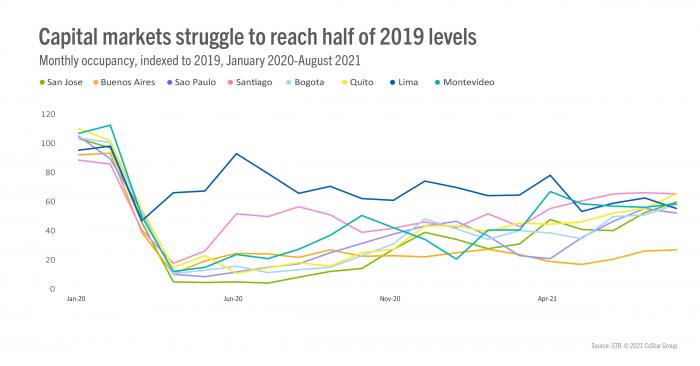Recovery is on the minds of most everyone in the industry at this point in the pandemic. In a previous article published at the beginning of the year, STR analyzed South America and how the region’s hotel performance has been closely tied to its pandemic timeline. With the pandemic situation in mind as we enter the last quarter of the year, is it now time to talk about real recovery in South America?
Let’s start with some global perspective.
Most regions are slowly trending to pre-pandemic levels. In August, the U.S. and Middle East reached hotel occupancy levels that were 88.7% of their 2019 comparables. Europe (79.1%), Northern Africa (78.3%) and Central America (76.5%) also showed upward movement in the index to 2019. Australia and Oceania was at just 43.7% of the 2019 level because of increased COVID-19 cases and lockdowns across the region.
Now back to South America
In August, hotel occupancy reached 72.3% of the 2019 comparable, which was the region's highest level since February 2020, as corporate cities continue to suffer from border closures and restrictions as well as lack of a MICE segment or international demand. However, most markets reached more than 50% of 2019 levels, led by Santiago (66.2%) and Quito (66.0%).
On the other side of the performance spectrum, Buenos Aires’ hotels continue to struggle to generate momentum at just 27.6% of 2019 levels.

